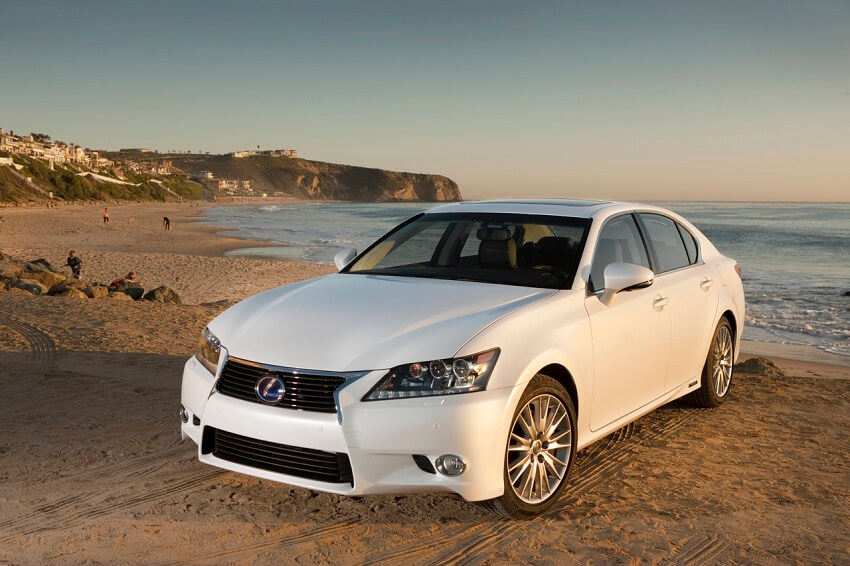According to Steve Coogan’s comic creation, Alan Partridge, Lexus (his plural usage being “Lexi”) is the “Japanese Mercedes”. While Lexus did indeed set out to compete in the US market against European luxury car brands such as Mercedes and BMW, its goal was not to imitate. Right from the start it was obvious that Lexus intended to carve out its own niche as its design clearly stated: This was no upmarket Toyota model, but something entirely new. OSV takes a look at the interesting history of Lexus.
When did Lexus start making cars?
Japanese cars first made inroads into the US market during the energy crisis of the 1970s. Fuel efficiency and small price tags had obvious appeal to cash-strapped American consumers. But, for those with champagne taste, “practical” subcompacts held no such charms. Fast-forward to the late 1980s and things were about to change big.
In 1986, Honda launched their luxury Acura division – the first-ever Japanese luxury marque – and by 1989, after 450 prototypes, years of engineering work and heavy investment, Toyota was primed to reveal their own high-end brand. The first Lexus models, the LS 400 and the smaller ES 250 debuted at the 1989 American Auto Show in Detroit, Michigan. Packed with a 4.0 L V8 engine and a design that distinguishes it from its Toyota origins, the LS 400 bested the competition in many eyes while sporting a lower price tag. Its performance, service, build-quality and exceptionally quiet ride helped garner prizes and praise. European luxury marques were quaking in their boots.
Quick success
Lexus quickly ate into the sales of Mercedes and BMW. The brand equalled BMW’s US sales in 1990, and was hot on the trail of Mercedes. Lexus subsequently broadened its range with SC300 coupe and the ES 330 sedan. By 1991, just two years after launching; it was the best-selling luxury import marque in the United States. Momentum continued in the 1990s with the GS 300 luxury sport sedan, a redesigned LS 400 and in 1996, the LX 450 luxury sport utility vehicle hit the roads.The first luxury SUV, the RX300 became the marque’s top-selling model ahead of the ES 300. In 1999, Lexus recorded its one millionth vehicle sold in the US and was ranked as the top-selling premium car maker in the US overall.
When did Lexus separate from Toyota?
Lexus was expanding in several overseas markets other than the United States. Firstly with the UK, Canada and Australia and later moving into New Zealand, South Korea, Malaysia, Taiwan, South America and Europe, where the brand consistently scores high among customer surveys.
With the “L-finesse” design philosophy, influenced by Japanese tradition, Lexus has further solidified its unique status among luxury carmakers. L-finesse stands for “leading edge and finesse” and was first applied in 2003 only to the LF (Lexus Future) series, but later extended to all Lexus models. It is an attempt to embody the concepts of “Intriguing Elegance”, “Incisive Simplicity” and “Seamless Anticipation”. In 2005, Lexus completed an organisational separation from parent company, Toyota. Design, engineering, training and manufacturing centres would all work exclusively for Lexus and would be kept separate from Toyota. This coincided with Lexus’ launch in Japan and in China. Executives aimed to increase sales outside of the US market, and redesigned Lexus vehicles for international release. They also announced hybrid and diesel powertrains in order to attract interest from European markets.
Throughout the 2000s, Lexus experienced success in South Korea, Taiwan and the Middle East, where it ranked either first or second among rivals. This success continued to the late 2000s and by 2007, Lexus’ biggest markets were the US, Japan, the UK, China, Canada and Russia.
2008-Present Day
Global sales fell in 2008 due to the global economic recession, with declines particularly high in US and Europe. The following year Lexus launched the HS 250h in North America and Japan, following this success Lexus announced plans to become a hybrid-only marque in Europe.
By the end of the decade, Lexus was the fourth-largest premium car make in the world by volume. Despite the Toyota vehicle recalls of 2009-2010, sales grew alongside the economy, with Lexus focusing on adding hybrids and new model derivatives.The redesigned GX 460 was recalled in April 2010, albeit voluntarily, for a software update after Consumer Reports recommended not to buy the vehicle, stating that there was a possible rollover risk due to a slow stability response to a high-speed emergency turn.
In 2012, Lexus began selling the fourth generation GS line, including the GS 350, 450h and 250. Two years later they unveiled the NX crossover, the first Lexus vehicle with a turbocharger.
In March this year, 2016, Lexus announced it will be producing a brand new flagship vehicle, the LC 500 and will be produced late 2017.
And that brings us to the present day, Lexus continues to be an extremely popular luxury brand and has firmly seated itself as a serious competitor to its European counterparts. And the plural of Lexus is still not Lexi.
